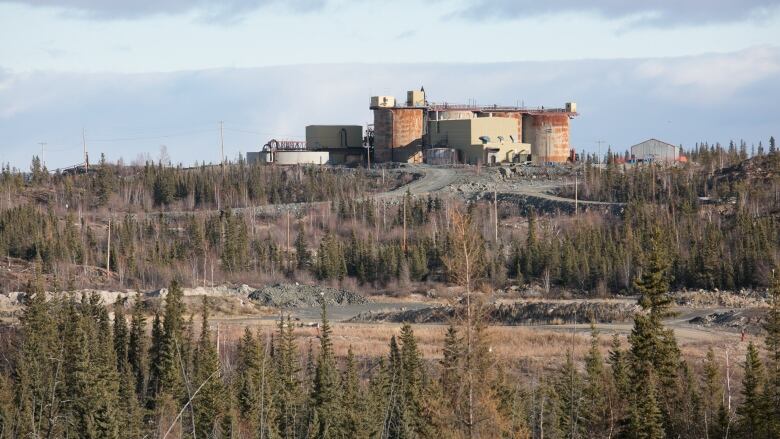Encase it in glass? Giant Mine oversight board ponders future of on-site arsenic
'Eventually some superior technologies will arise'

The Giant Mine Oversight Board has begun researching permanent solutions for dealing withthousands of tonnes of arsenic trioxide dust stored beneath the former gold mine, but a board director coordinating the research says it will likely take decades before a plan is put in place.
On Thursday, the board released a report outlining the "state of knowledge" regarding management methods for toxic arsenic trioxide dust, scoring potential solutions on their viabilityforbeing used in the future. Approximately237,000 tonnes of the highly-toxic dust was captured and stored in underground caverns during Giant Mine's 50 years of operation.
- Is Yellowknife ready to reckon with its toxic legacy?
- Giant Mine cleanup team opts for dry freeze of arsenic over wet
The federal government, which inherited responsibility for the mine's cleanup when owner Royal Oak went bankrupt, decided to use a "frozen block" method in the interim, freezing the ground around the dustto keep it contained.In 2013, that option was approved by the Mackenzie Valley Environmental Impact Review Board for a maximum of 100 years.
"That gives us time to look at different options of how to do this," said Tony Brown, an independent director of the board who coordinated the study. "So where we stand today, we're not yet in a position to be suggesting what technologies might be superior. We're trying to identify what technologies warrant further consideration going forward."
Some of the highest-scoring options in the study include vitrification, a process that involves encasing the arsenic in glass, and mineral precipitation, which would convert the dust into stable minerals that don't easily dissolve in water.
However, Brown emphasized that the study is meant to be a "snapshot in time" of current technology, and that it's entirely possible that it could be years before a solution is chosen.
"I'm optimistic that with advances in industry... that eventually some superior technologies will arise that may very well serve as an effective way of managing this waste over a much larger time scale."
The study will be used to help guide the board's research in future years. With an annual budget of about $250,000, Brown said he hopes to sit down with universities, research centres, and industry to developa research program to deliver long-term solutions.
"There's a degree of confidence that the frozen block will be effective within that [100-year] window," he said."But there is a need to start to do research into these alternatives.
"It's not so much what you do with the arsenic trioxide dust, how you treat it, how you stabilize it. The biggest technical challenge is how do you get enough of it out of the ground that you don't leave an ongoing source of arsenic trioxide that could contaminate the environment in the future."












_(720p).jpg)


 OFFICIAL HD MUSIC VIDEO.jpg)
.jpg)



























































































